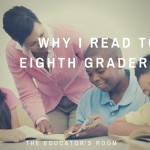By Guest Writer Melissa Kandido
Melissa Kandido teaches IB Art, IB History, IB English, & IB Geography for middle and upper grades at the Windhoek International School in Windhoek, Namibia. She is sharing with us her experiences and adventures this year as an international educator and IB teacher.
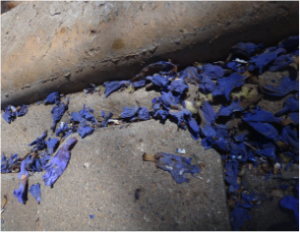 The synthesis work I gave to my IBDP12 (International Baccalaureate Diploma Year 12) students was part of an art-appreciation and visual rendering of an idea that developed during a class discussion about old art. It began with what develops character in a piece. I asked them
The synthesis work I gave to my IBDP12 (International Baccalaureate Diploma Year 12) students was part of an art-appreciation and visual rendering of an idea that developed during a class discussion about old art. It began with what develops character in a piece. I asked them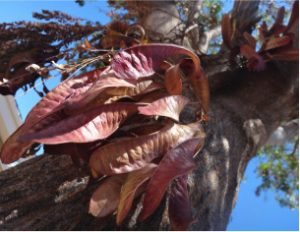 about perfection. I inquired their opinions of un-finished pieces. I challenged them to define beauty in less than 10 words. I then told them to tell me what beauty was not. The discussion further chased the idea of what can be broken and beautiful simultaneously. The students talked about scars, about Greek sculptures that had deterioration, about imperfections, about tea cups in museums (why is something utilitarian being treated at non-utilitarian?), and the students investigated beauty and brokenness. We also discussed Kintsugi, the Japanese art of creating beautiful re-assembled pottery fused with gold, silver, platinum, copper or bronze resin.
about perfection. I inquired their opinions of un-finished pieces. I challenged them to define beauty in less than 10 words. I then told them to tell me what beauty was not. The discussion further chased the idea of what can be broken and beautiful simultaneously. The students talked about scars, about Greek sculptures that had deterioration, about imperfections, about tea cups in museums (why is something utilitarian being treated at non-utilitarian?), and the students investigated beauty and brokenness. We also discussed Kintsugi, the Japanese art of creating beautiful re-assembled pottery fused with gold, silver, platinum, copper or bronze resin.
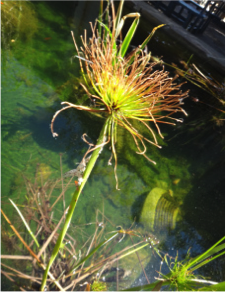 During the next class, I asked that they sketch seeds, pods and broken beauties on campus. They needed to assess and for
During the next class, I asked that they sketch seeds, pods and broken beauties on campus. They needed to assess and for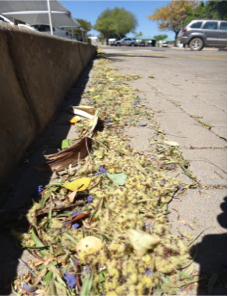 mulate in a series of sketches. The minimum: 15 sketches in 120 minutes. They needed to look for human causes to brokenness as well as natural causes. They could interpret seed as anything, not just in the literal sense. They were allowed to view their surroundings with a meaningful nomenclature that may or may not be scientific or dictionary-based. What I interpret as a pod, seed or broken beauty may or may not be what their mind’s eye can behold in the same sense. We must be open to interpretation.
mulate in a series of sketches. The minimum: 15 sketches in 120 minutes. They needed to look for human causes to brokenness as well as natural causes. They could interpret seed as anything, not just in the literal sense. They were allowed to view their surroundings with a meaningful nomenclature that may or may not be scientific or dictionary-based. What I interpret as a pod, seed or broken beauty may or may not be what their mind’s eye can behold in the same sense. We must be open to interpretation.
One artist drew the logo for the school as a seed and explained the child being the seed for growth as a young pupil. Another student drew a broken tree that wasn’t really broken but it seemed flowerless and without bloom, so it could feel broken. One artist brought in a pod filled with seeds and blooms that had fallen and stated that each of them had broken off of their source but were still blooming. She was particularly challenged by this activity because what she sees on a daily basis and is ‘normal’ to her somehow averts her beauty-seeking eyes. For, to her, that which is average, normal and taken for granted is not something she seeks out for beauty. We shared and discussed our interpretations. The sketches were the practice but not the final product. The sketches were the beginnings for further investigation.
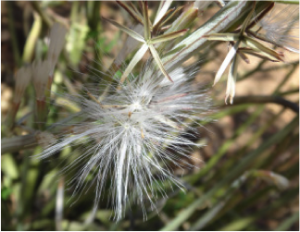
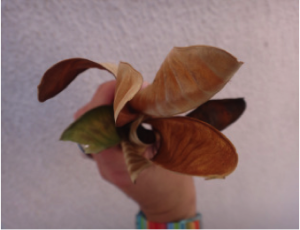
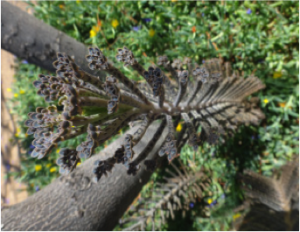
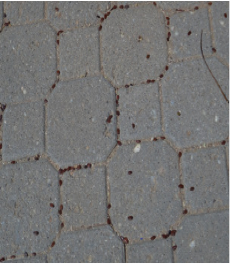 To follow up on the time on campus, I asked them to dedicate a minimum of 5 pages in their Investigation Wor
To follow up on the time on campus, I asked them to dedicate a minimum of 5 pages in their Investigation Wor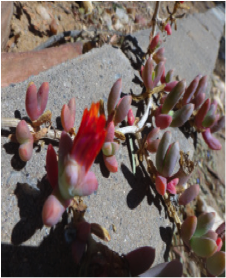 kbooks to the concept of seeds, pods and “broken beauty.” Before doing so, they need to research the science of propagation–what seeds need fire or smoke? What kinds of plants need roots, stems or leaves to propagate? What is a recalcitrant seed vs. an orthodox seed? Write about it, draw about it, ask more questions about it. Juxtapose it. Contrast it. Compare it. Metaphor it. Simile it. But most importantly, I wanted them to connect it to our broken art and broken beauty discussion.
kbooks to the concept of seeds, pods and “broken beauty.” Before doing so, they need to research the science of propagation–what seeds need fire or smoke? What kinds of plants need roots, stems or leaves to propagate? What is a recalcitrant seed vs. an orthodox seed? Write about it, draw about it, ask more questions about it. Juxtapose it. Contrast it. Compare it. Metaphor it. Simile it. But most importantly, I wanted them to connect it to our broken art and broken beauty discussion.
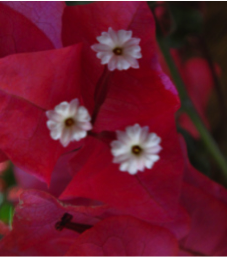 Next, they needed to ask themselves if they thought the petal more beautiful because of it’s vibrancy? Self-assessme
Next, they needed to ask themselves if they thought the petal more beautiful because of it’s vibrancy? Self-assessme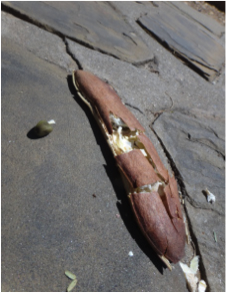 nt is key in all subjects, not just art, and in all aspects of life. For how will you know if you don’t know you? Is the bloom better for artistic rendition than a broken pod? Furthermore, how do we manage our own perspectives of our self-beauty when we apply pod/ seed/ bloom/ broken to our selves? If we as humans plant our seeds in a pot and they are then potted plants, how have we truncated their ability to be podded in their own natural ways?
nt is key in all subjects, not just art, and in all aspects of life. For how will you know if you don’t know you? Is the bloom better for artistic rendition than a broken pod? Furthermore, how do we manage our own perspectives of our self-beauty when we apply pod/ seed/ bloom/ broken to our selves? If we as humans plant our seeds in a pot and they are then potted plants, how have we truncated their ability to be podded in their own natural ways?
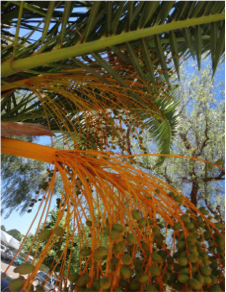 They needed to research and investigate, so I gave them this. Next, research 2-4 artists that are inspired by seeds, pods, and take it to a level in art that they appreciate/ that draw them in (maybe Sibonelo Chiliza, Milliande Demetriou, Nnenna Okore, Alice Ballard, Matthew Harding, Carol Gwizdak, or Peter M. Clark…) I kept asking questions. Are they mostly men or women who work with the ideas of pods and seeds? I asked, “If you were going to make a broken beauty series, out of what media would suit you and your ideas…what seeds interest you and why? What broken pods interest you and why?
They needed to research and investigate, so I gave them this. Next, research 2-4 artists that are inspired by seeds, pods, and take it to a level in art that they appreciate/ that draw them in (maybe Sibonelo Chiliza, Milliande Demetriou, Nnenna Okore, Alice Ballard, Matthew Harding, Carol Gwizdak, or Peter M. Clark…) I kept asking questions. Are they mostly men or women who work with the ideas of pods and seeds? I asked, “If you were going to make a broken beauty series, out of what media would suit you and your ideas…what seeds interest you and why? What broken pods interest you and why?
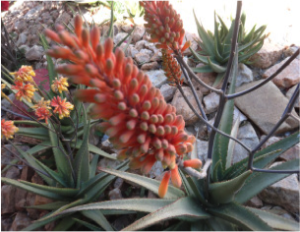
I took pictures of the pods, seeds and broken beauties around campus. This is where my eyes took me. Pods open but still on trees. Pods crushed underfoot. Blooms and blossoms still full of color but contrasting the grey cement bricks. It was a walk of discovery and I wish I could talk to these trees. I wish I could seedspeak. I wish my ears could hear pods opening. I want their stories. As for my students, I will not share their investigation workbooks yet as these blossoming artists’ work is under wraps until their exhibition. Photos will need to suffice.
I have uprooted myself from US Education’s soil. I have replanted myself in International Education’s soil. I have fallen from one public school branch and grown onto a new international baccalaureate branch. My bloom is no less vibrant despite its regrowth. My pod is still fertile with ideas. I am adjusting and wiggling around in my soil, figuring out which way to root. I will continue to grow for I have enriching soil of a new community of teachers and students with new rays of ideas. I am fed by the challenge and enriched by the support. My lessons are not just for my students.



